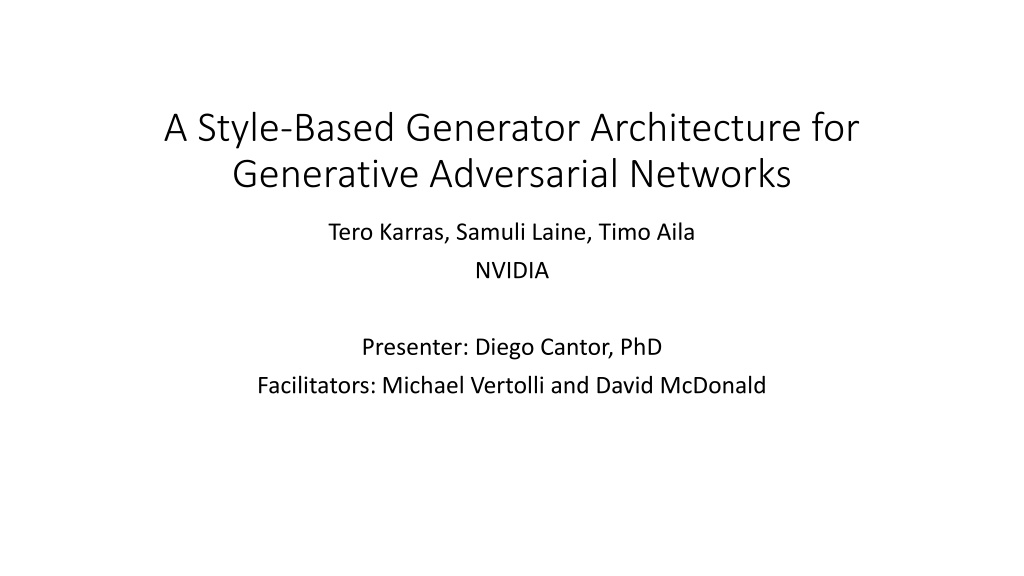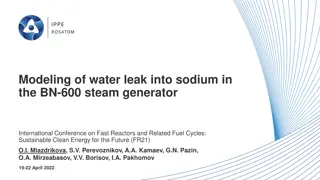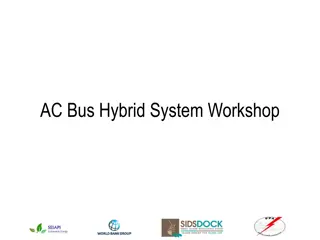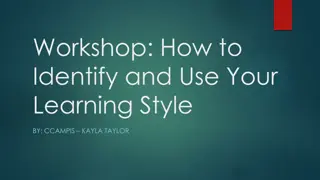Evolution of Style-Based Generator Architecture in GANs
Evolutionary advancements in GAN generators, such as the progressive GAN setup and adaptive instance normalization, have led to improved image synthesis quality. Inspired by style transfer networks, these models enhance training efficiency and style transfer capabilities, revolutionizing the field of generative adversarial networks.
Download Presentation

Please find below an Image/Link to download the presentation.
The content on the website is provided AS IS for your information and personal use only. It may not be sold, licensed, or shared on other websites without obtaining consent from the author. Download presentation by click this link. If you encounter any issues during the download, it is possible that the publisher has removed the file from their server.
E N D
Presentation Transcript
A Style-Based Generator Architecture for Generative Adversarial Networks Tero Karras, Samuli Laine, Timo Aila NVIDIA Presenter: Diego Cantor, PhD Facilitators: Michael Vertolli and David McDonald
Despite improvement in image quality synthesis, GAN generators operate as black boxes Generator P(Real Image) Discriminator Training Data Understanding of image synthesis is poor
This work proposes a model for the generator that is inspired by style transfer networks style transfer networks output input style Arbitrary Style Transfer in Real-time with Adaptive Instance Normalization, Huang and Belongie, 2017
Everything started with the usage of batch normalization to improve training Gamma and Beta are learned from data Arbitrary Style Transfer in Real-time with Adaptive Instance Normalization, Huang and Belongie, 2017
Instance normalization improves style-transfer loss when compared to other approaches Improved Texture Networks: Maximizing Quality and Diversity in Feed-forward Stylization and Texture Synthesis, Ulyanov and Vedaldi, CVPR, 2017
Adaptive Instance Normalization simply scales the normalized input with style spatial statistics. This has profound implications. input style Style statistics are not learnable. So AdaIN has no learnable parameters
The baseline configuration is the progressive GAN setup (same research group at NVIDIA) Progressive growing of GANs for improved quality, stability and variation, Karras et al., ICLR 2018
Smooth transition Smooth transition into higher-res layers using bilinear interpolation
Step A Original baseline, no changes.
Step B Replace nearest neighbor with bilinear upsampling Replace pooling with bilinear downsampling (in the discriminator)
Step C Add mapping network and styles. Styles are generated from W and used in AdaIN operations
Step D remove traditional input
Step E Add noise inputs (enables generating stochastic detail)
This is the key: AdaIN operation affects the relative importance of features at every scale importance of features at every scale. How much? This is determined by the style. affects the relative Convolution Scale and Translate activation maps according to style A Style A AdaIN Style changes the relative importance of features For the subsequent convolution operation Convolution
Style affects the entire image but noise is added per pixel. The network learns to use it to control stochastic variation. variation. stochastic Convolution Noise Style A AdaIN
This group used the Frchet inception distance Fr chet inception distance (FID) to measure the quality of generated images 2048 Inception-v3 Pool3 layer activations Fr chet distance between two multivariate Gaussians Generated images = FID Inception-v3 Pool3 layer activations 2048 50K random images from training set (CelebA-HQ / FFHQ) Lower score is better (more similar)
Results: quality of the generated images. Lower FID is better Method CelebA-HQ FFHQ A Baseline Progressive GAN 7.79 8.04 B + Tuning (incl. bilinear up/down) 6.11 5.25 C + Add mapping and styles 5.34 4.85 D + Remove traditional input 5.07 4.88 E + Add noise inputs F + Mixing regularization 5.06 5.17 4.42 4.40
Mixing styles during image synthesis. Coarse styles such as pose, face shape and glasses are copied.
Middle styles copied: hair style, facial features but not pose or glasses.
Copying only fine resolution style such as colour scheme
Major contributions 1. Significant improvement over traditional GAN generators architecture 2. Separation of high-level attributes from stochastic effects 3. Does not generate new images from scratch but rather through a smart combination of styles that are embedded in sample images (latent codes)

























